Learn how to convert any recipe to sourdough with a few easy tricks. Eating healthy fermented grains doesn’t have to be challenging. Just use this simple process to convert your favorite recipes to sourdough.
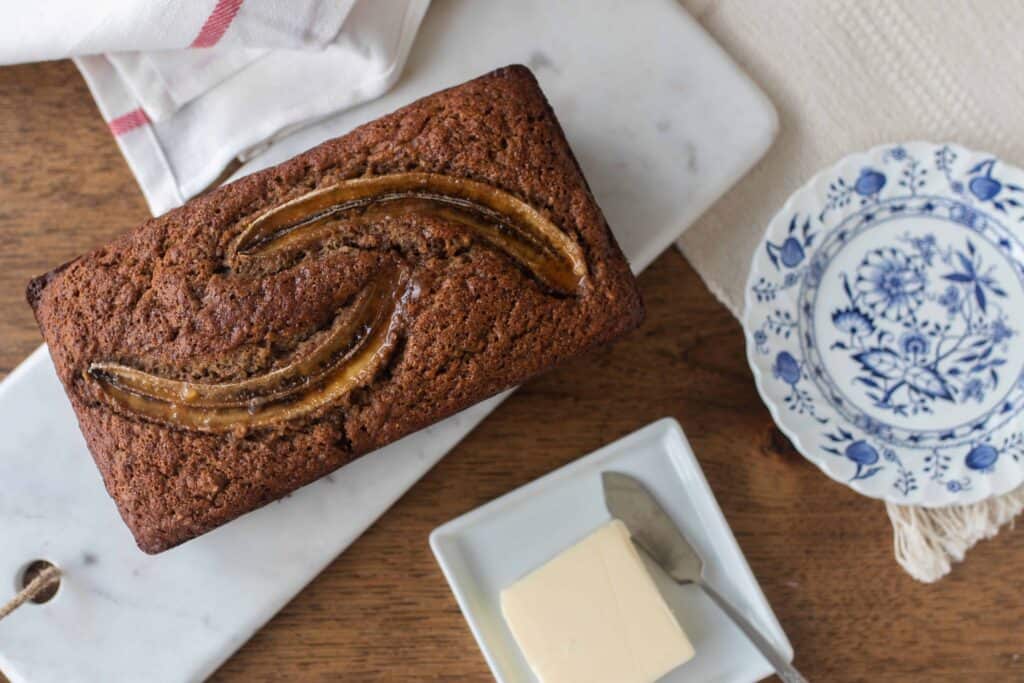
If I had a food love language, I’m sure it would be sourdough. And by this point, you’ve all figured this out.
It’s been a 10-year love affair with this healthy, ancient way of eating grains. Once converted, it is truly hard to go back. Our family is never going back.
Honestly though, sourdough doesn’t have the best reputation. People have a misconception that sourdough is difficult and takes a long time.
You might be imagining yourself spending several hours a day kneading dough, or even hunkered over your bread bowl with your sourdough instructions, trying to troubleshoot your dough like a bad chemist.
That is just not the case. Sourdough has simplified meal making and food prep dramatically for our family.
Converting a recipe is actually quite simple. You may have to tweak it a bit, but it is really worth it. Between the health benefit of easier digestion and the greater depth of flavor, you’ll be thankful you made the switch.
There are multiple factors when considering converting a recipe to sourdough. Consider the type of recipe, how much liquid and flour, and whether or not another leavener may be added.
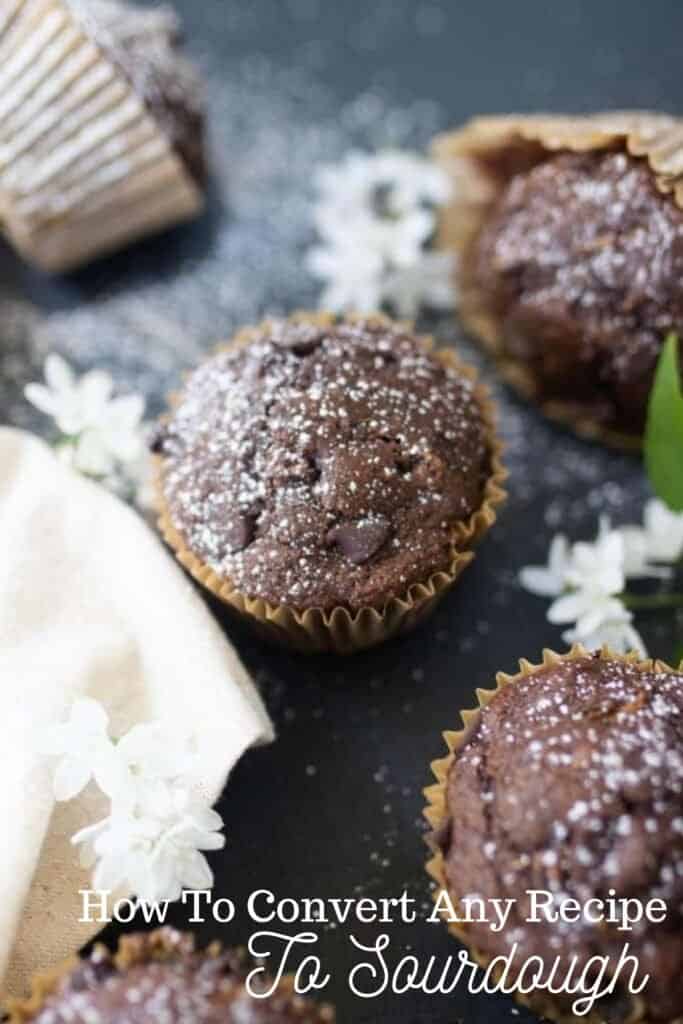
Why would you want to convert a recipe to sourdough?
- Flavor: Sourdough adds a delicious tang and complexity to grain products. From savory to sweet, the dimension added can’t compare with regular wheat products. Once you switch to eating traditionally fermented grains, regular grains seem sub-par and lacking flavor.
- Health: Switching to grains fermented with sourdough starter reduces the amount of phytic acid present in the grains, and allows the nutrients (like folate) to become more bio-available. Your body then can more easily absorb these nutrients.
- Digestibility: Fermented grains actually contain less gluten than unfermented. The good bacteria and yeast help break down the gluten, making it easier for your body to digest. Those who have difficulty digesting grains may be able to tolerate long-fermented sourdough products. Those with celiac disease still should avoid any glutinous grains, even fermented ones.
How To Convert Any Recipe To Sourdough:
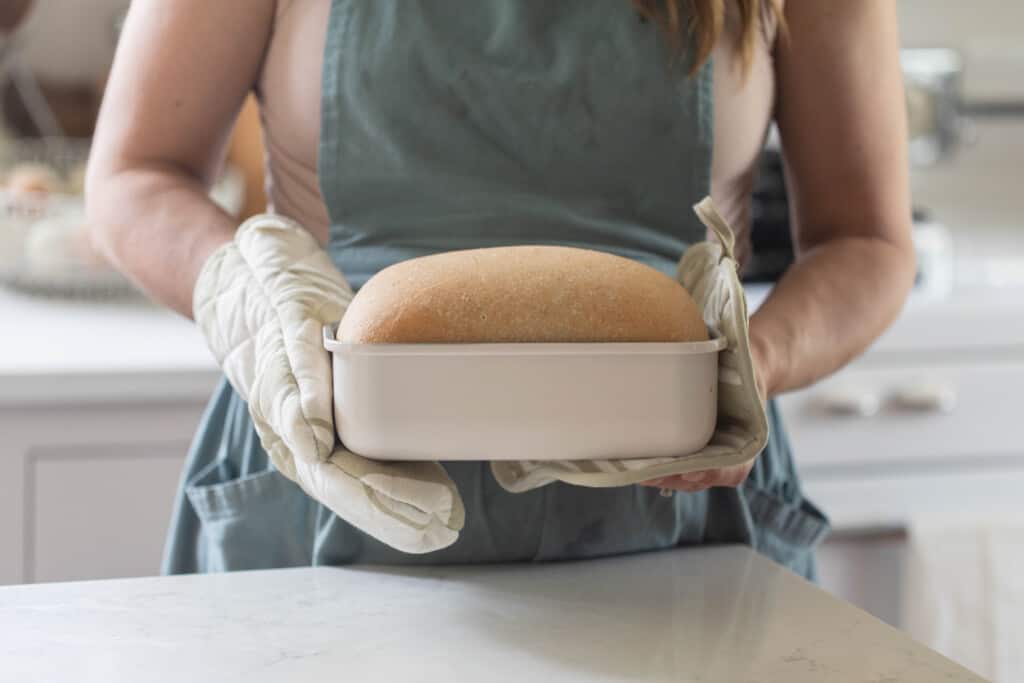
Yeast Recipes:
When I started my sourdough journey, I took the yeast bread recipe I had been using and adjusted to work with sourdough.
So, I know it is possible to take your favorite yeast bread recipe and make it using the wild yeast from sourdough starter instead!
If you’d like to do this with any of your go-to recipes, there are three basic rules I follow.
- Swap out one packet of yeast for a half cup of starter.
- Reduce the liquid by ⅓ cup + one tablespoon and reduce the flour by ⅓ cup + one tablespoon.
- Increase rise time, usually double.
Want to know how I came up with this super scientific recipe conversion? I simply added ⅓ cup + one tablespoon of flour and water to a bowl, and measured it. This combination equals exactly a half cup of “sourdough starter”, so we are simply adding the starter to the recipe and taking the liquid and flour volume back out.
You can use this same process to work with your own conversions for different types of flours and recipes.
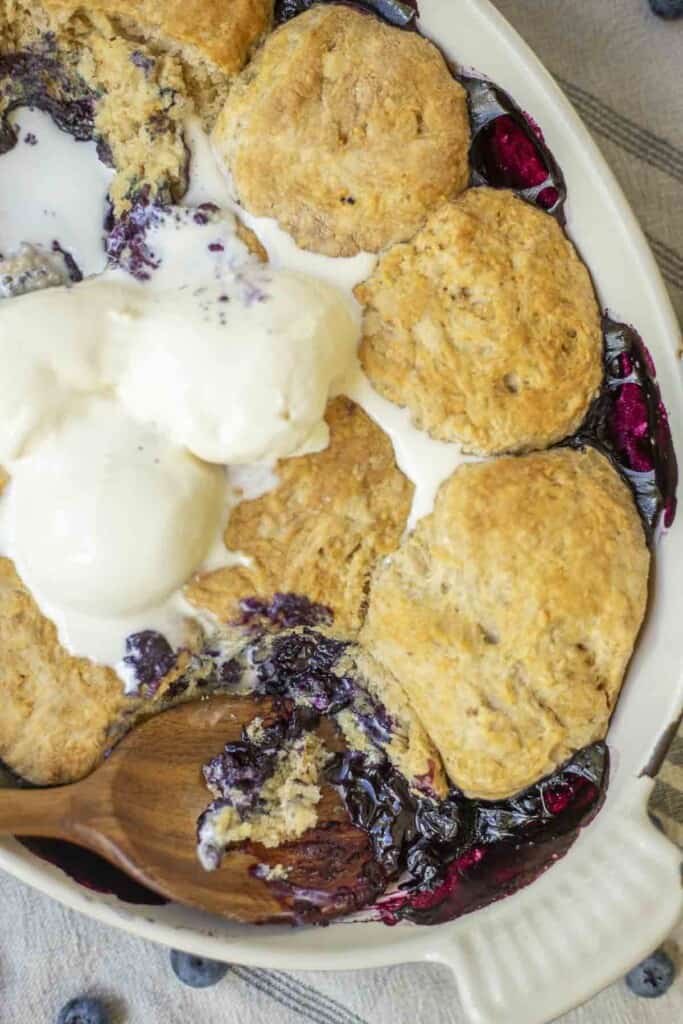
Non-Yeast Recipes:
There are many quick-bread recipes that work well when converted to sourdough, like pancakes, crepes, muffins, and other quick breads (hello, banana bread).
Now this can be a little trickier since many non-yeast recipes (like cookies, quick breads, etc) don’t contain a lot of liquid. For recipes like this, I would suggest adding a half a cup of sourdough starter, and possibly increasing the amount of flour a bit.
I say possibly because you may be able to get away with adding 1/2 cup of starter and not having to do any else differently to the recipe.
For other recipes, you could possibly reduce the amount of oil added while also adding more flour. I would suggest trying 1/3 cup for both.
Honestly, this conversion works best for yeast breads, but can be done with others as well. If all else fails, I have just about every sourdough recipe you could think of on the blog.
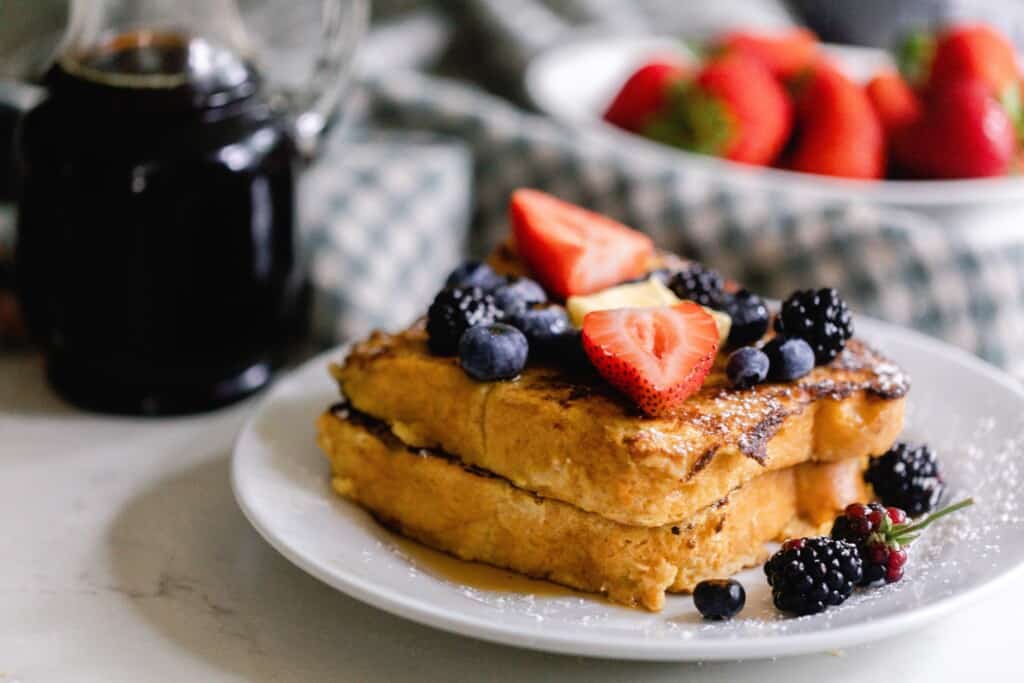
The hydration of your starter matters when making these adjustments!
The conversion example above is based on a sourdough starter fed at 100% hydration. I feed my starter equal parts flour and water.
The amount of flour and water used is based on the amount of starter I already have. But the ratio of flour to water never changes.
If you feed your starter a different ratio of flour to water, your recipes will need to be adjusted accordingly.
You can also use sourdough starter in your quick bread recipes as well!
The basic principle given previously still works here: add starter, reduce flour and water to equal the volume of the starter added. ½ cup starter at 100% hydration = ⅓ cup + one tablespoon of flour and water.
Try Some Of Our Favorite Recipes
- Sourdough Brownies
- Buffalo Cauliflower Wings
- Sourdough Strawberry Cream Cheese Cobbler
- Easy Artisan Bread
- Sourdough Banana Bread
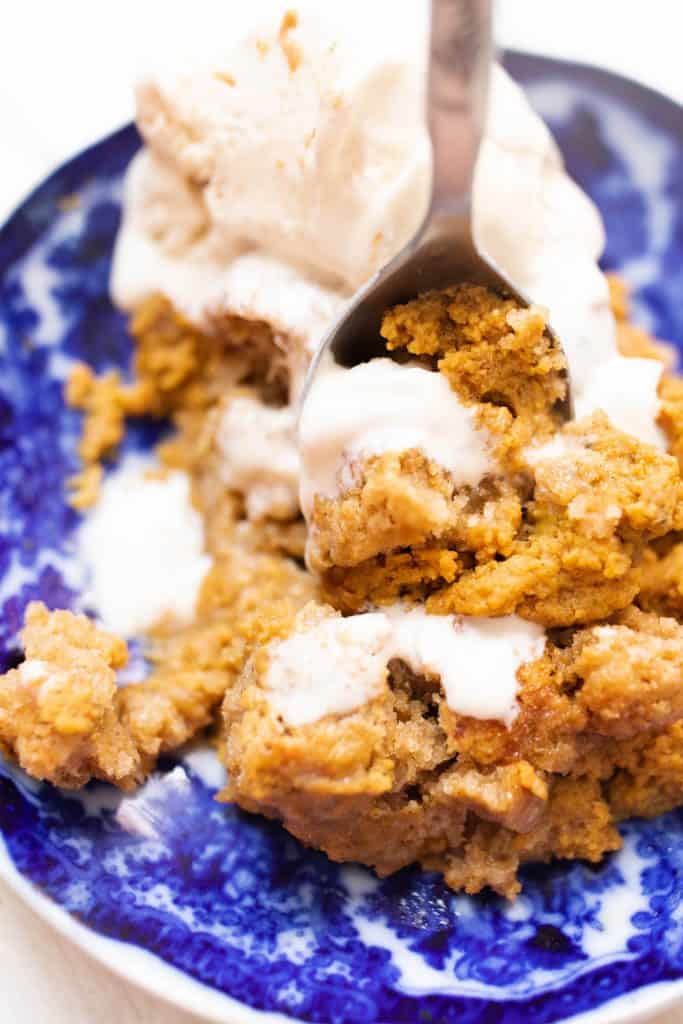
Why does sourdough need a longer rise time?
Typically, rise time will take about double the time, as the natural yeasts and bacteria take more time to develop than commercially developed yeast. While a yeast bread may take 1-2 hours to rise, give your sourdough recipe at least 4 hours.
If you are making a bread recipe, make sure to double both rises. The bulk rise, and the second rise after shaping.
With sourdough, you can even do longer rises in the refrigerator to help develop flavor without over fermenting.
For bread, you would allow a bulk ferment after starting the dough, and then a second ferment in the fridge, covered with plastic, for up to 24 hours.
Differences in rising time will change substantially depending on the type of recipe, if it contains other leaveners like baking soda, the environment it is rising in, etc.
FAQ:
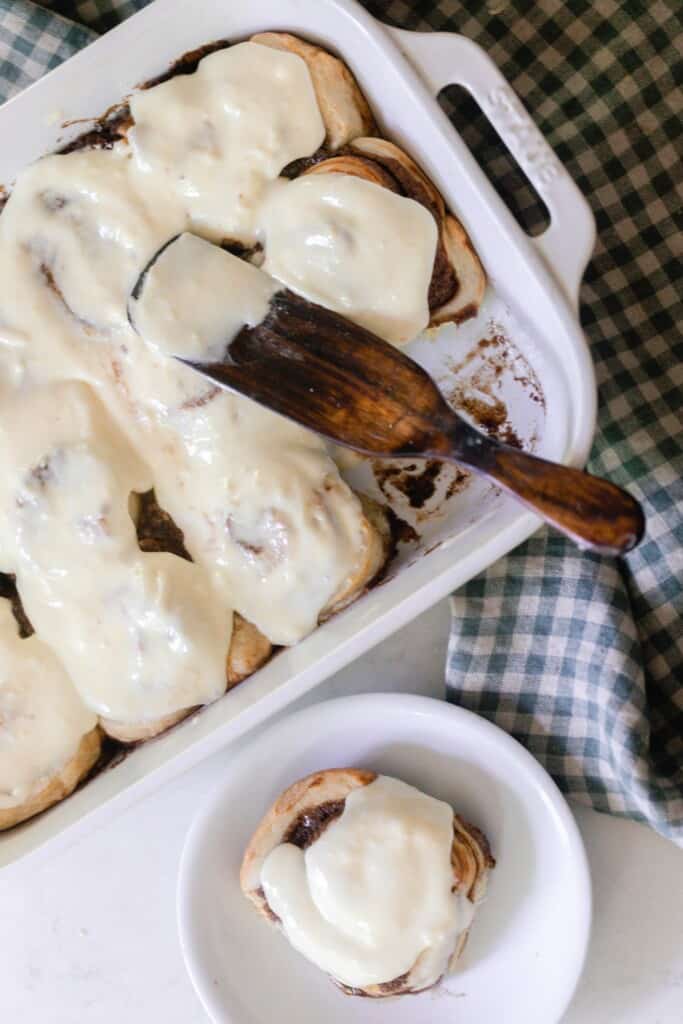
How much sourdough starter equals a packet of yeast?
A packet of yeast roughly equals 1/2 cup of sourdough starter in a recipe.
Is it cheaper to buy or make sourdough?
It is much cheaper to make your own sourdough bread compared to buying it.
What is the ratio of sourdough starter to baking?
While many bakers may choose a different ratio, the most common is one part flour to one part water, to one part sourdough starter (1:1:1)
Sourdough might sound complicated, but most new processes do. Take some time to read and learn about sourdough, give your own starter a try, and I promise, you’ll find it to be a simpler skill than expected.
It’s an incredibly beneficial practice, both for your health, and for the depth of flavors you build into your recipes.










So, I absolutely LOVE your sourdough pretzel recipe but used all my sourdough and had a freezer incident so I tossed all the sourdough I had saved.
How do I change your pretzel recipe from sourdough TO yeast? I would just do your formula the opposite, Right!?
For every 1/2 cup sourdough I’d use 1pk yeast? Or, 1/3 + 1 TBsp flour and water?
I am going to probably try the latter, since your recipe already has 3 tsp of yeast. I don’t know if I will get your answer by the time I try and make them again.
My sister and my nice have been craving them a few weeks and just told me yesterday! 😂 So, I am going to make them some asap!
I do have a new starter going but it will be a while yet, and this time I will MAKE myself NOT bake with it once strong! But prepare some dried sourdough starter and keep in a sacred spot! lol or MANY spots so as to always have ONE available if others get destroyed!